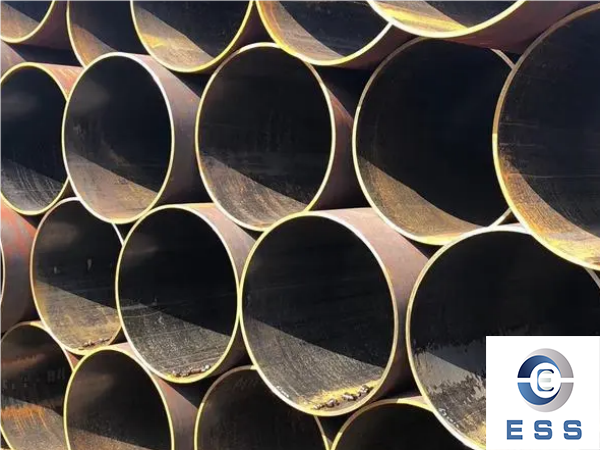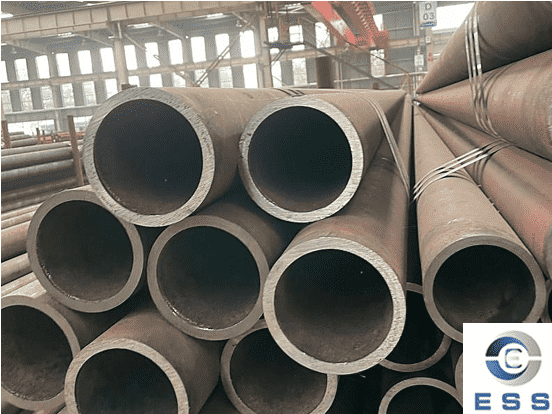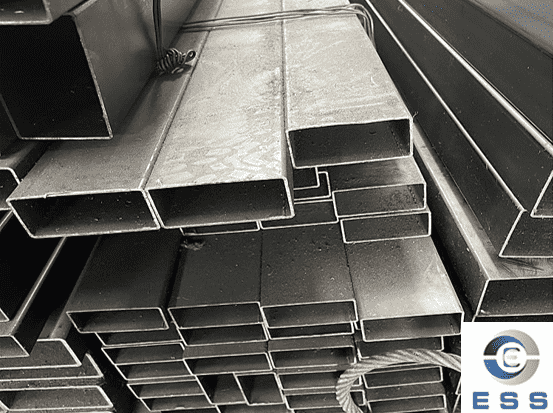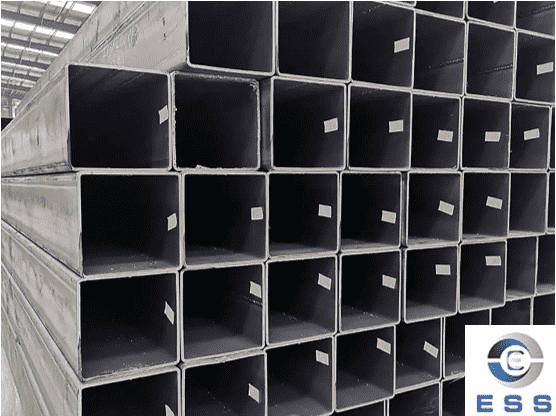Key points in construction of long-distance oil pipelines
In recent years, with the rapid development of social economy, the petrochemical industry has also received vigorous development opportunities. Oil pipeline (
seamless pipe and
welded pipe) transportation has become the main oil transportation method due to its unique advantages such as long transportation distance, large transportation volume, and continuous operation. However, pipeline transportation requires large initial investment, long service life, complex operating environment, and is susceptible to corrosion, geological landslides, etc. Effective countermeasures should be taken in terms of pipeline construction safety to ensure construction quality and the personal safety of workers.

Material and equipment inspection
1. Before construction, the factory certificates, quality certificates and material certificates of the materials and equipment used in the project should be inspected. If there is any doubt about their quality, re-inspection should be carried out.
2. Steel pipes should be inspected for dimensional deviations such as outer diameter, wall thickness, ovality, etc. according to manufacturing standards, and the surface should be free of cracks, scars, wrinkles, and other defects whose depth exceeds the nominal wall thickness deviation.
3. If the steel pipe has scratches, dents, arc burn marks, excessive ovality, deformation or flattening and other defects, it should be inspected, classified and processed.
4. Before installing line valves, visual inspection, valve opening and closing inspection and hydraulic pressure test should be carried out.
Loading, unloading, transportation and storage of materials and anti-corrosion pipes
1. When loading and unloading anti-corrosion pipes, the anti-corrosion layer must not be damaged. Special spreaders that will not damage the pipe openings should be used. Bend pipes should be loaded and unloaded with pipe lifting straps.
2. During the driving, hoisting, loading and unloading processes of all construction machinery and equipment, the safe distance between any part of them and overhead power lines should comply with safety regulations.
3. The transportation of anti-corrosion pipes should comply with the relevant regulations of the transportation department. A thrust baffle should be installed between the trailer and the cab, and the uprights should be firm.
4. Before loading, the anti-corrosion grade, material, and wall thickness of the anti-corrosion pipes should be checked. It is not advisable to mix anti-corrosion pipes with different anti-corrosion grades, materials, and wall thicknesses.
5. When transporting anti-corrosion pipes, bundle them firmly and take protective measures for the anti-corrosion layer. A rubber plate or other soft material liner should be installed between the anti-corrosion pipe and the frame or column, between the anti-corrosion pipe, and between the anti-corrosion pipe and the binding rope. The binding rope should be covered with a rubber tube or other soft pipe sleeve. Protective measures should be taken when transporting bent pipes, and pipe trucks equipped with flexible pads should be used to transport insulated pipes.
6. Warehouses for flammable and explosive items should be equipped with fire extinguishing equipment in accordance with relevant standards.
7. After the anti-corrosion pipes arrive at the construction site, protective measures should be taken when they are stored in the open air for more than 3 months.
Pipe trench excavation
1. When excavating the slope of a pipe trench with a depth exceeding 5m, measures such as slowing down the slope, supporting or stepped excavation should be adopted according to the actual situation.
2. Before digging the pipe trench, the distribution of underground facilities should be explained to the construction personnel. Within 5m on both sides of underground facilities, manual excavation should be used, and protective measures should be taken for the excavated underground facilities. For important underground facilities, the consent of their management department should be obtained before excavation, and excavation should be carried out under their supervision when necessary.
3. Blasting and excavation of pipe trenches should be completed before pipe laying. Blasting operations should be undertaken by units with blasting qualifications. Safety measures should be formulated for blasting operations, and safe blasting distances should be specified. The safety of nearby residents, pedestrians, and above-ground and underground facilities should not be threatened. For important facilities that may be affected, relevant departments and personnel should be notified in advance, and safety protection measures should be taken before blasting.
4. When excavating pipe trenches across roads, rivers, densely populated areas, etc., appropriate safety measures should be taken and warning signs, signal lights, warning objects, etc. should be installed.
Pipe trenching and backfilling
1. Before entering the ditch, the depth of the pipe ditch should be rechecked and foreign objects such as landslides, stones, water, ice and snow in the ditch should be removed.
2. Pipes should be lowered into the trench using lifting equipment such as pipelayers. Non-lifting equipment such as bulldozers or crowbars are not allowed. The sling should use nylon slings or rubber roller hanging baskets, and steel wire ropes must not be used directly.
3. When the pipeline is lowered into the trench, a dedicated person should be responsible for the unified command of the operation. Practical and effective measures should be taken to prevent the pipeline from rolling into the trench. Care should be taken to avoid collision with the trench wall to prevent scratches on the anti-corrosion layer.
4. During the trenching process of the pipeline, an electric spark leak detector should be used to check the anti-corrosion layer of the pipeline. The detection voltage should comply with the design and current relevant standards. If there is any damage or pinhole, it should be repaired in time.
5. In general areas, pipelines should be backfilled in time after being laid down in the ditch. The accumulated water in the ditch should be removed before backfilling. Areas prone to erosion in mountainous areas, high water levels, densely populated areas and construction in rainy season should be backfilled immediately.
6. For pipe trenches that may be eroded by floods or not soaked after backfilling, measures to prevent erosion and pipe floating should be taken such as compacting the trenches, drainage or sand bags.
Pipe cleaning
(1) Pipe purging
1. When using compressed air to purge pipelines, the air compressor should be inspected first and passed the test run before purging.
2. Pipe purging should be carried out in sections, and components that are easily clogged and damaged such as orifice plates, regulating valves, etc. should be removed in advance.
3. Blind plates should be installed at the connections between pipelines and pumps, compressors, towers, heat exchangers and other equipment, and the interfaces should be separated by a certain distance to prevent debris from blowing into the equipment.
4. When pipe blowing, no one is allowed near the blowing outlet. The blower outlet should face no man's land or the sky, and it is strictly prohibited to face the factory area or residential area. When high and medium pressure steam pipelines are purged with steam and subjected to target inspection, a silencer should be installed at the blowout outlet or other noise reduction measures should be taken.
5. When tapping and inspecting the purged pipeline, the operator should stand in a safe position to prevent falling from a high place or being scalded.
(2)Pipe pickling
1. Before pipeline pickling, safety education should be provided to workers to make them understand the operating procedures, the properties of various chemicals used in pickling, and emergency measures.
2. Set up eye-catching warning lines in the work area to prevent accidents caused by irrelevant personnel entering. Personnel engaged in pickling operations should wear protective clothing, acid-resistant rubber gloves, masks and other protective equipment as required.
3. When unloading acid from a tank truck, it is strictly prohibited to repair the interfaces and fastening bolts on the upper or lower part of the tank truck. When opening the hole cap or bottle stopper of the acid container, the operator should stand on the upwind side, and it is strictly forbidden to face the bottle mouth towards others.
4. When diluting concentrated acid, the acid solution should be slowly added to the water and stirred while adding to prevent the temperature from rising too quickly. It is strictly forbidden to add water to the concentrated acid.
5. When the acid solution escapes, bubbles, drips or leaks onto the work site, it should be immediately flushed with water or neutralized with dilute alkaline solution.
6. Acids and their solutions should be stored in special warehouses, and contact with organic matter, oxidants, degreasing agents, etc. is strictly prohibited.
7. When cleaning pipelines, the cleaning site should maintain good ventilation. If acid splashes onto the body surface, flush it with plenty of water.
Buried laying and crossing construction of pipelines
(1) Buried laying of pipelines
The pipelines outside the oil depot or the long connecting pipelines in the oil storage area operation area are generally laid underground. There are the following special requirements for buried pipeline laying:
1. Buried pipeline connections should be welded, and flange connections or threaded connections should not be used. When flanges must be used to connect pipe sections in order to install valves or perform pressure and leakage tests in sections, the flanges and connected valves should be installed in the valve well and cannot be buried directly in the ground.
2. The requirements for assembly, welding, leak testing and pressure testing of buried pipelines are very strict. The discovery and treatment of problems must be blocked before the pipelines are buried in the soil, so as to reduce the workload of maintenance in future use and management.
3. The pipe wall of the buried pipeline should be thicker. The anti-corrosion layer of pipelines is also different from the paint anti-corrosion of above-ground pipelines. Instead, ordinary, reinforced or specially reinforced anti-corrosion insulation layers should be selected based on the soil resistivity.
(2) Pipeline crossing construction
1. Where pipelines cross railways and highways, the intersection angle should not be less than 60°, and preferably 90°. Where pipelines pass through railways and highways, culverts or casings or other protective measures should be taken. The end of the casing should not protrude from the roadbed slope by less than 2m. When there is a drainage ditch on the roadside, the end of the casing should not protrude from the edge of the drainage ditch by less than 1m. The distance between the top of the casing and the railway track should not be less than 0.8m, and the distance from the road surface should not be less than 0.6m.
2. Only when crossing is inconvenient due to pipeline elevation restrictions or other reasons, crossing over from railways and highways is adopted.
3. When the pipeline crosses an electrified railway, the clearance height above the track surface should not be less than 6.6m.
4. When the pipeline crosses a non-electrified railway, the clearance height above the track surface should not be less than 5.5m.
5. When the pipeline crosses the fire road, the clearance height above the road surface should not be less than 5m.
6. When the pipeline crosses a parallel road, the clearance height above the road surface should not be less than 4.5m.
7. The distance between the edge of the pipe rack column and the railway should not be less than 3m, and the distance from the road should not be less than 1m.













 Eastern Steel Manufacturing Co.,Ltd not only improve product production and sales services, but also provide additional value-added services. As long as you need, we can complete your specific needs together.
Eastern Steel Manufacturing Co.,Ltd not only improve product production and sales services, but also provide additional value-added services. As long as you need, we can complete your specific needs together.










